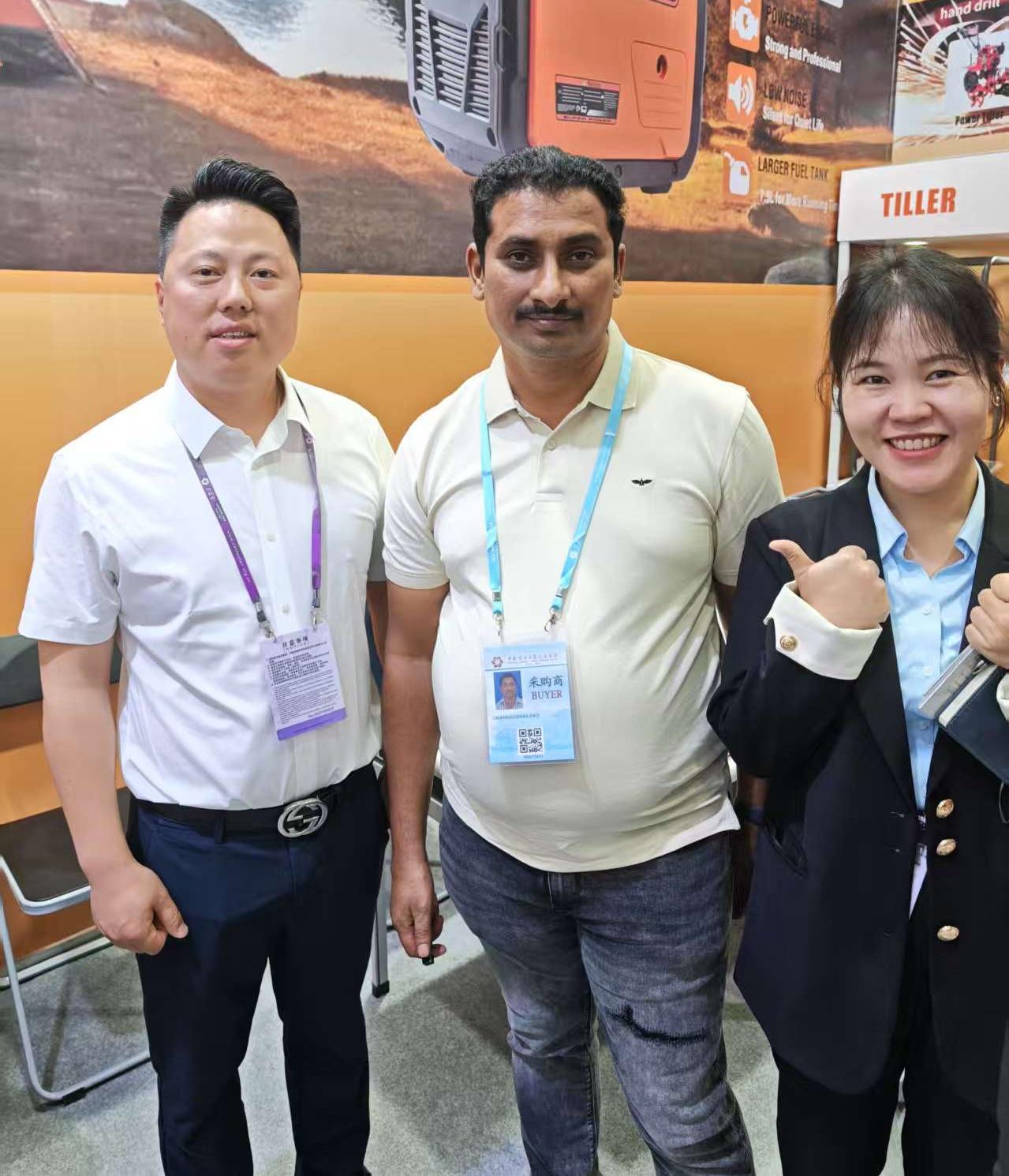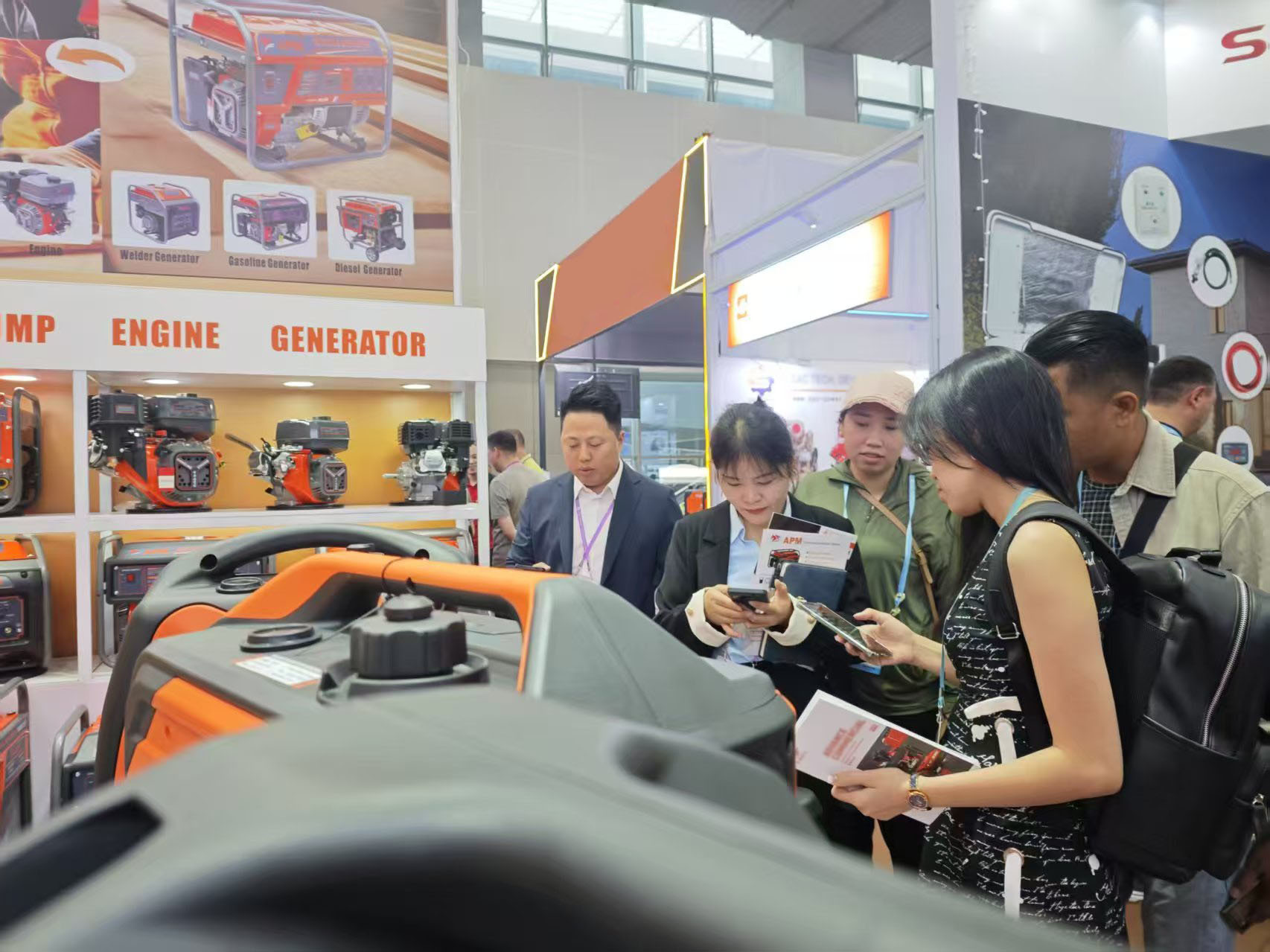17
2025
-
09
Outlook for Foreign Trade Trends in the General Equipment Manufacturing Industry
Author:
Chongqing Yuma Mechanical & Electrical Co., Ltd.
Outlook on Foreign Trade Trends in the General Equipment Manufacturing Industry
Driven by the dual forces of global industrial chain restructuring and the emerging technological revolution, the general equipment manufacturing industry is undergoing a profound transformation—from traditional mechanical manufacturing toward intelligent system integration. As the "mother machine" of industrial production, this sector is witnessing structural shifts in its foreign trade landscape, confronting challenges such as rising technology barriers and supply-chain realignment, while simultaneously embracing opportunities like the rise of emerging markets and the push toward green transformation. This article systematically analyzes the industry's foreign trade trends and explores corporate strategies for addressing these dynamics, examining them from three key dimensions: policy environment, market demand, and technological innovation.
I. Policy Environment: Global trade rules are accelerating their restructuring, leading to a significant increase in compliance costs.
In 2025, global trade protectionism continued to escalate, with Europe and the U.S. establishing new trade barriers through non-tariff measures such as technical standards and carbon tariffs. Following the implementation of the EU's Carbon Border Adjustment Mechanism (CBAM), export costs for Chinese construction machinery, machine tools, and other products have risen by 12% to 18%, prompting companies to set up component assembly plants in countries like Poland and Mexico to circumvent these tariffs. Meanwhile, the U.S. Inflation Reduction Act mandates that domestic procurement of critical components exceed 65%, leading to a diversion of orders away from local hydraulic system suppliers and pushing businesses to accelerate the localization of their supply chains.
Regional trade agreements are showing a "East-West balance" trend. Under the RCEP framework, Southeast Asian markets have seen a year-on-year 23% increase in demand for automated production lines, with Indonesia and Vietnam boosting import subsidies for agricultural machinery equipment to up to 30% of the product value. Meanwhile, Brazil's infrastructure revitalization plan is expected to generate $40 billion in demand for construction machinery procurement—but companies bidding must hold local bank guarantee qualifications. To overcome these challenges, businesses are partnering with overseas branches of Chinese-funded banks to issue letters of guarantee, while also adopting equipment-leasing models to ease customers' financial burdens. This approach has become the key to unlocking access to emerging markets.

II. Market Demand: Emerging Markets Rise While High-End Demand Diversifies Simultaneously
The Asia-Pacific region continues to lead global demand, with manufacturing upgrades in China, India, and Southeast Asia driving a surge in imports of smart equipment. In 2024, the export delivery value of general-purpose equipment reached 667.83 billion yuan, with the Yangtze River Delta and Pearl River Delta industrial clusters contributing more than 60% of this figure. Suzhou Industrial Park is focusing on smart equipment manufacturing, providing customized welding robots for the automotive industry in the Yangtze River Delta, boosting welding efficiency by 40%. Meanwhile, Wuhan Optics Valley has developed a high-precision laser cutting system that achieves import substitution while reducing costs by 35%.
The high-end market is witnessing technology-driven differentiation. Germany’s machine tool industry, through the VDW Association, offers comprehensive support spanning market certification, technical training, and more, solidifying its dominant position in the realm of large-scale, precision CNC machine tools. Meanwhile, Japanese companies, backed by policy initiatives like the "Machine Vibration Control Method," have carved out a unique edge in proprietary technologies for high-performance CNC systems. In contrast, Chinese enterprises have achieved significant breakthroughs in areas such as five-axis linkage CNC systems and collaborative industrial robotics. Cases like Shenyang Machine Tool’s H16 spark plug lathe and Haier Smart Home’s OS system for intelligent factories demonstrate that domestically produced high-end equipment has already gained global competitiveness.
Emerging markets are giving rise to differentiated demand. In Africa, infrastructure projects have sparked a surge in demand for tunneling equipment and main bearings for shield machines, driving the industry toward higher precision and longer service life. Meanwhile, the Latin American market is experiencing strong demand for intelligent upgrades of agricultural machinery; one company has developed a production-line optimization system based on digital twins, helping customers boost their capacity by 25%.
III. Technological Innovation: Smartization and Greenization Become Core Competitiveness
Artificial intelligence and IoT technologies are deeply integrated into product development. A certain company has launched an industrial robot-sharing platform that leverages data-driven management of equipment utilization, reducing usage costs for SMEs by 40%. Meanwhile, Sany Heavy Industry’s electric pump trucks feature an integrated "battery-motor-electric control" design, cutting energy consumption by 30% compared to traditional products—and these vehicles have even been exported in reverse to the German market. In the green manufacturing sector, permanent magnet synchronous motors are increasingly replacing asynchronous motors as the industry standard. Additionally, a company’s newly developed exhaust-gas treatment equipment is seeing annual investment growth of 28%, effectively meeting environmental demands under the "dual carbon" goals.
Service-oriented transformation is reshaping the value chain. A certain company’s developed equipment health management system has reduced customer downtime by 60% through predictive maintenance. Meanwhile, Haier Smart Home’s AIoT platform connects multiple global production lines, enabling real-time optimization of production parameters and cutting energy consumption by 15%. According to a forecast by Zhongyan Puhua, by 2030, the market size for full-lifecycle management services will surpass one trillion yuan, emerging as a new battleground for corporate competition.

IV. Challenges and Responses: Building Resilient Supply Chains and an Innovative Ecosystem
Geopolitical conflicts have kept import dependence high for critical components such as advanced chips and specialty steel materials. To address supply-chain risks, domestic companies are accelerating the process of domestic substitution: For instance, Guangxun Technology now has the capability to deliver small batches of high-speed optical modules, while its self-developed chips help reduce reliance on imported products. Meanwhile, a certain company has established a remanufacturing center that extends product lifecycles by up to 30% through refurbishing equipment like pumps, valves, and compressors.
The technological certification barriers have entered a period of intensive updates. The new EU Machinery Directive mandates that exported equipment be equipped with intelligent safety control systems, while Germany’s TÜV certification has added a new data security testing module. Meanwhile, North America’s UL certification standards have raised the electromagnetic compatibility requirements for devices by three levels. To stay ahead, companies are collaborating with institutions like Munich University of Technology to jointly develop core components, enabling them to complete the iterative process of their control modules in advance.
V. Future Outlook: From "Made in China" to "Global Standards"
Chinese general equipment companies are accelerating their global expansion through "technology export + capital acquisitions." One company acquired a German industrial robotics firm to gain access to core technologies, and is now building smart factories in Southeast Asia to serve the Belt and Road Initiative markets. Meanwhile, the "Assessment Method for Intelligent Manufacturing Capability Maturity," spearheaded by this company, has been officially adopted as a national standard, helping Chinese standards gain international recognition. According to a forecast by Zhongyan Puhua, China's general equipment industry is expected to surpass the critical RMB 1 trillion mark by 2030, with its global market share continuing to rise steadily.
In this reshuffling of the global industrial landscape, companies must wield technological innovation as their spear and rely on a robust compliance system as their shield, building differentiated advantages in the race toward intelligentization, greening, and service-oriented transformation. Only then can they seize the initiative in the trillion-dollar market restructuring—and ultimately make the leap from "scale expansion" to "value reconfiguration."
Foreign Trade,General Equipment Manufacturing,Chongqing Yuma Mechanical & Electrical Co., Ltd.,Cross-border Foreign Trade
LATEST BLOG
2025-10-13
Chongqing Yuma Mechanical & Electrical Co., Ltd. has already arrived at the Canton Fair venue and begun setting up its exhibit.
On October 13, 2025, with just two days remaining until the opening of the 138th China Import and Export Fair (Canton Fair), the exhibition team from Chongqing Yuma Mechanical & Electrical Co., Ltd. has already arrived in Guangzhou. They are diligently working on setting up the company’s booth at the China Import and Export Fair Complex (No. 382 Yuejiang Middle Road, Haizhu District, Guangzhou). As a machinery manufacturing enterprise based in Dashipan Village, Xiemǎ Town, Beibei District, Chongqing, Yuma Mechanical & Electrical is showcasing several innovative products at this year’s fair, aiming to leverage the Canton Fair platform to expand into international markets and strengthen collaboration with global buyers.
2025-10-10
Golden autumn in October—keep striving! Chongqing Yuma Mechanical & Electrical Co., Ltd. remains as passionate as ever.
"The struggle of this golden autumn is all for an even better harvest next year," said Ge Jinli, pointing to the blueprint. The company is currently focusing on three key strategic directions: first, deepening cooperation with countries along the Belt and Road initiative—already accounting for 28% of exports by 2025; second, expanding into the new energy sector by developing a prototype hydrogen-fuel generator; and third, building the "Yuma Mechatronics Industrial Internet Platform" to enable end-to-end digital management, from production to after-sales service.
2025-09-30
Chongqing Yuma Mechanical & Electrical Co., Ltd. Celebrates National Day, Joining Hands to Honor Our Motherland’s Glorious Anniversary
Born in China, raised in the heart of Huaxia—how fortunate we are! Chongqing Yuma Mechanical & Electrical Co., Ltd. proudly celebrates National Day, channeling its patriotic enthusiasm into a powerful drive for progress and success.
2025-09-29
Chongqing Yuma Mechanical & Electrical Co., Ltd.—Get Ready for the Autumn 2025 Canton Fair!
Chongqing Yuma Mechanical & Electrical Co., Ltd., a leading enterprise in Chongqing's machinery and electrical industry, will showcase its innovative products and cutting-edge technologies, offering global buyers a spectacular showcase of "Made in Chongqing" ingenuity.
2025-09-25
Where are generators commonly used?
From ensuring the continuity of industrial production to providing emergency safety in commercial spaces; from enhancing the quality of outdoor living to supporting survival in extreme environments, generator applications have already permeated every corner of societal operations. With ongoing technological advancements, generators of the future will evolve toward greater efficiency—such as those powered by hydrogen or biofuels—and increased intelligence, featuring remote monitoring and automatic start-and-stop capabilities, continuously delivering a dependable source of electricity to support humanity.
2025-09-24
Yuma Mechatronics warmly welcomes the Mid-Autumn Festival.
On this special Mid-Autumn Festival, Yuma Mechatronics carries forward its culture through innovation, unites hearts with warmth, and embodies responsibility through action. As the radiant couplet above the factory gate beautifully captures: "The Yushui River flows endlessly, forging exquisite products; horses arrive swiftly, ushering in a bright future." This is not only the company’s pledge to strive relentlessly but also a heartfelt wish for every Yuma employee—to journey together toward excellence, always embracing togetherness and advancing hand-in-hand with our shared dreams.


